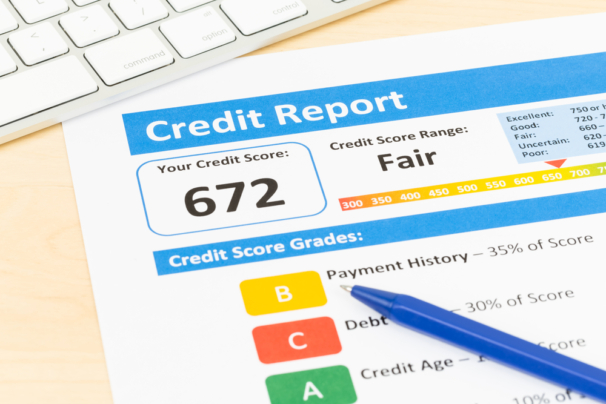
When a lender requests your credit score from a credit bureau, your score will reflect what’s in your credit report at that point in time.
Your credit report doesn’t stand still for long, so when it’s updated again, it usually produces a different credit score. This cycle can occur many, many times just over the course of one day.
Understanding how this process works can help you plan when you want to apply for credit. It will also help you decide the optimal time to make a credit card payment if you’re trying to boost your score.
Here’s what you need to know about the ever-changing nature of your credit report and your credit score.
How Often Does Your Credit Report Update?
There are three major credit bureaus: Experian, Equifax and TransUnion. When your lender reports your loan and credit activity, your credit report is updated with the new information.
But this isn’t done in real time. There’s a process bureaus go through to make sure the data is valid. This can take anywhere from a few hours to several days. And if there’s an error or something looks out of place, the bureau has to stop and verify the information before it goes into your file. This can delay your report from being updated quickly.
Lenders report information at least once per month and when the data is added to your report, it’s likely to produce a new credit score. As your credit report changes, so does your credit score.
How Often Do Credit Card Issuers Report to the Credit Bureaus?
There isn’t one answer to this question. Most lenders, especially credit card issuers, report once per month to the bureaus. The day they report your payment activity sometimes coincides with the closing date on your credit card statement.
But keep in mind that other types of lenders might report to the bureaus less often. And even then, not all lenders report to all three credit bureaus. If you’re unclear about this, ask your lender to clarify how often it reports your payment history and which bureaus it reports to.
Reported Information That Makes Your Credit Score Drop
Credit bureaus collect a variety of information about your credit accounts. Some examples include your reported balance, credit limit and payment history. If you’ve had trouble using your credit card responsibly, then there may also be negative items that have been reported. These items create a change in your credit score but not in a good way.
At least there’s good news about delinquencies and other negative items. There are time limits for how long they can stay on your credit report. After the time expires, they automatically drop off your report. And after the first two years, the negative impact on your score tends to decrease.
Let’s take a look at some of the most common things people can’t wait to get off their credit reports:
- Late payments.
- High credit utilization.
- Bankruptcies.
- Other negative items, such as collection accounts.
Late payments. These stay on your report for seven years starting from the date of your missed payment. Keep in mind that you don’t usually get reported to the bureaus until you’re more than 30 days late for your monthly payment. Do whatever it takes to set up reminders for when payments are due so this doesn’t happen to you.
And don’t forget to pay attention to all of your bills. If you default on a cellphone bill, for instance, it could possibly show up on your credit report if the creditor decided to report it.
High credit utilization. You have what’s called a credit utilization ratio. This is the amount of credit you’ve used compared with the amount of credit you have available. If your ratio is greater than 30%, you could be penalized with a lower credit score.
To boost your score, on the other hand, keep your ratio to less than 10%. This might sound difficult, but once you develop a solid credit history, you’ll get fairly high credit limits and this will be easy to pull off.
Bankruptcy. This is the big one for most people. A Chapter 7 bankruptcy stays on your report for 10 years. But a Chapter 13 bankruptcy is removed after seven years. A Chapter 7 bankruptcy stays on your report longer because most of the debt isn’t repaid.
Other negative items. Things such as collection accounts, repossessions, some lawsuits and foreclosures stay on your report for seven years.
New Accounts on Your Credit Report
If you don’t see your new credit card account on your credit report, be patient. It can take at least a month or more for your new account to appear on credit reports.
So don’t freak out if you see a hard inquiry on your credit report but the new account isn’t listed yet. An inquiry is like a quick hit on your report. But all the details that go along with your new account have to go through a verification process that takes a little more time.
But when it does show up, your credit score will change based on the reported details of your new account.
How New Policies Impact Your Credit Report and Credit Score
Sometimes, changes are made due to new reporting standards. For instance, since September 2017, there has been a 180-day waiting period before medical debts are allowed to show up on credit reports. This was designed to give consumers more time to work out billing and timing issues.
If you had a medical debt that didn’t meet the new requirement, it was removed from your report. So, while your credit report changes due to the credit activity in your life, it can also change due to new policies.
And there are newer versions of credit scores, such as FICO Score 9 and VantageScore 4.0, that ignore paid medical collection accounts. The problem is that lenders are very slow to change the scoring model they prefer.
How Rapid Rescoring Works
Let’s say you’re about to apply for a mortgage, but your score is a little low due to inaccurate information on your credit report. Or maybe you’ve paid off a large amount of debt, but it hasn’t shown up on your report yet.
When it comes to interest rates, a few points off your credit score can keep you from the best rates, which can be costly over time. But given the nature of a mortgage application, you can’t wait for 30 days or more for your report to show your current credit status.
Rapid rescoring is one way to address this dilemma. If your lender sees the potential for you to get a better rate, then the lender can request a rapid rescore from a credit bureau. This involves offering proof that the rescore will make a difference in your rate. The lender also has to pay a fee for this service.
Note that only the lender can make this request, not you. But don’t hesitate to ask a potential lender about rapid rescoring if you think it will help your case.
Review Your Credit Reports Often
Since your credit score is based on the contents of your credit report, you want to make sure your reports are free from errors and any signs of fraud.
Remember, you can get a free credit report every 12 months from each major bureau. If you plan to apply for credit, don’t wait until the last minute to see what’s on your credit reports.
And as a bonus, the major credit bureaus are offering free weekly credit reports during the pandemic. This new benefit is available through April 2021. Unfortunately, scammers love a crisis, and identity theft and credit card fraud are higher during times of distress. So this is a great opportunity to monitor your own credit.











